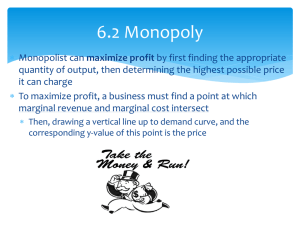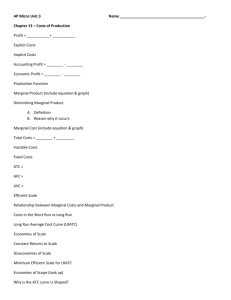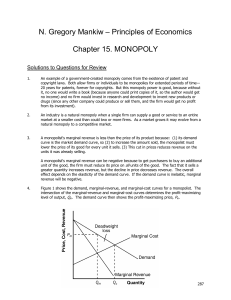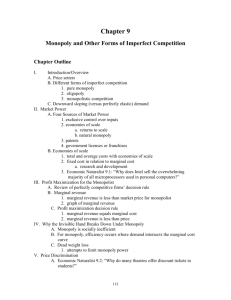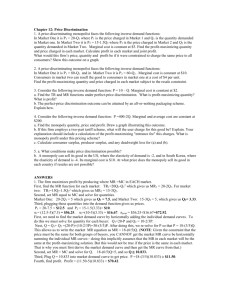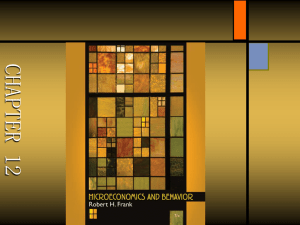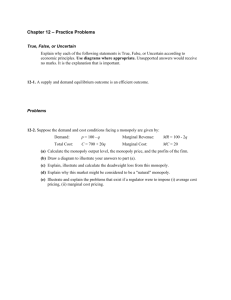PART III
advertisement
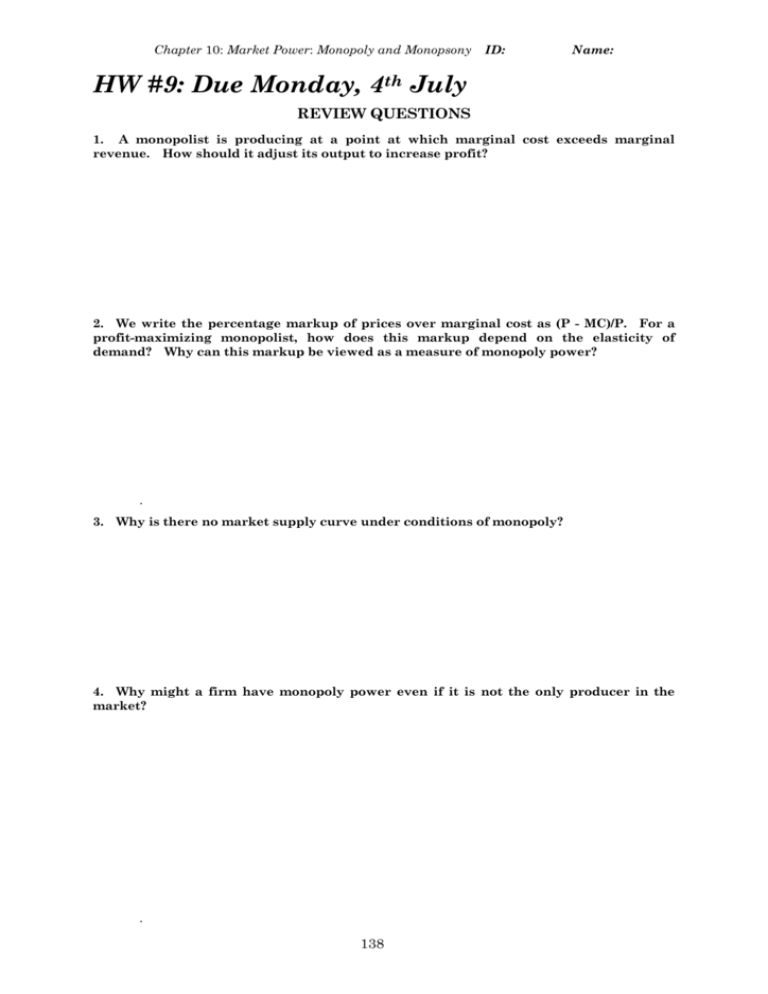
Chapter 10: Market Power: Monopoly and Monopsony ID: Name: HW #9: Due Monday, 4th July REVIEW QUESTIONS 1. A monopolist is producing at a point at which marginal cost exceeds marginal revenue. How should it adjust its output to increase profit? 2. We write the percentage markup of prices over marginal cost as (P - MC)/P. For a profit-maximizing monopolist, how does this markup depend on the elasticity of demand? Why can this markup be viewed as a measure of monopoly power? . 3. Why is there no market supply curve under conditions of monopoly? 4. Why might a firm have monopoly power even if it is not the only producer in the market? . 138 Chapter 10: Market Power: Monopoly and Monopsony ID: Name: EXERCISES 5. The following table shows the demand curve facing a monopolist who produces at a constant marginal cost of $10. Price Quantity 18 16 0 4 14 8 12 12 10 16 8 20 6 24 4 28 2 32 0 36 a. Calculate the firm’s marginal revenue curve. b. What are the firm’s profit-maximizing output and price? What is its profit? c. What would the equilibrium price and quantity be in a competitive industry? 139 Chapter 10: Market Power: Monopoly and Monopsony d. 6. Name: What would the social gain be if this monopolist were forced to produce and price at the competitive equilibrium? Who would gain and lose as a result? Suppose that an industry is characterized as follows: C 100 2Q2 MC 4Q P 90 2Q MR 90 4Q a. ID: Firm total cost function Firm marginal cost function Industry demand curve Industry marginal revenue curve . If there is only one firm in the industry, find the monopoly price, quantity, and level of profit. . b. Find the price, quantity, and level of profit if the industry is competitive. c. Graphically illustrate the demand curve, marginal revenue curve, marginal cost curve, and average cost curve. Identify the difference between the profit level of the monopoly and the profit level of the competitive industry in two different ways. Verify that the two are numerically equivalent. 140
